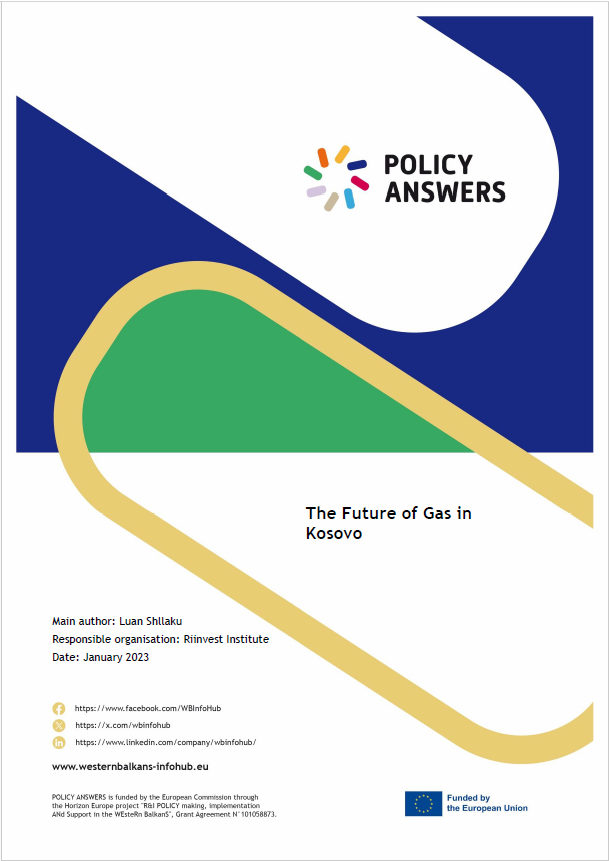This POLICY ANSWERS Brief was prepared in January 2023 by Luan Shllaku and published by the Riinvest Institute. This document is part of the ‘Green Talks’ debate series within the Green Action Space platform, a joint initiative of the Riinvest Institute and the Kosovo Foundation for Open Society (KFOS). The content of this publication is the responsibility of the Riinvest Institute.
In the panel discussion on which the report is based, special attention was paid to the issue of lignite gasification and the possibility of revitalising the gas supply network from North Macedonia. The panellists were Mr. Geri Selenica, General Director of the Albanian Centre for Strategic Studies, Mr. Luan Shllaku, field expert and General Director of the Kosovo Foundation for Open Society (KFOS), and Mr. Sabit Restelica, Senior Consultant for Environmental Issues.
Natural gas in all its forms, after oil and coal, is one of the primary fossil energy sources today. In the vast majority of European countries, gas still remains one of the most important energy sources, whether for industrial or household needs. On the other hand, the European Union (EU) Green Deal foresees Europe becoming the first continent with net zero greenhouse gas emissions by 2050. This initiative implies the beginning of a significant reduction process in the use of fossil resources as energy sources. However, the recent energy crisis and escalation of the war in Ukraine have caused the EU to reclassify gas and nuclear energy as ‘clean’ resources for a transitional period, thus opening up financing opportunities for investments that use these two resources. The Western Balkans, including Kosovo*,1has joined the global efforts for climate neutrality through the so-called Green Agenda of the Western Balkans agreement. This agreement consists of commitments from all the economies in the region to align their actions and policies with EU countries, in the global efforts towards climate neutrality by 2050. Given that the energy sector, specifically the production of electricity in Kosovo, is mainly based on fossil fuels (lignite power plants), the country needs an exit strategy that will free the market from non-clean energy sources in the next thirty years. Facing this situation and considering the still limited sources of renewable energy, gas could be considered an alternative that would address the energy demands for a transitional period until the complete termination of energy production from fossil sources. However, in the main strategic energy documents of the past, there was no vision regarding the possibilities of gasification in the energy sector (e.g., gas-fired power plants), or investments in networks for industrial and household needs. Similarly, the Draft Energy Strategy of the Republic of Kosovo for 2022-2031, does not foresee any possibilities for investments either in new generating capacities or other investments in the gas infrastructure. The main reasons related to the government’s hesitation to invest in such projects, based on this document, are mainly related to the current geopolitical situation and uncertainties regarding Europe’s gas supply as well as the high prices of this fossil fuel. However, it is worth noting that this strategy does not exclude the exploration of possibilities that could link Kosovo’s market with the gas supply network, either through North Macedonia or Albania.
The report outlines opportunities for gasification of the energy sector in Kosovo and provides recommendations regarding the future of gas in Kosovo.

